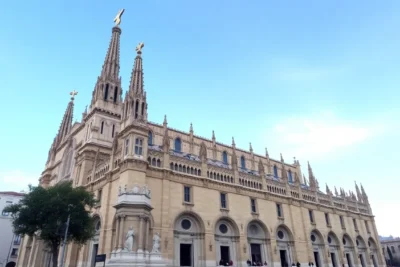
Barcelona, a city known for its rich history and stunning architecture, is home to one of the most extraordinary landmarks in the world: La Sagrada Familia. This basilica, designed by the visionary architect Antoni Gaudí, has captivated millions with its intricate designs and towering spires.
In this article, we will explore The Fascinating Facts about Barcelona's Iconic Landmark: La Sagrada Familia, shedding light on its unique construction, cultural significance, and the ongoing efforts to complete this masterpiece. Discover why La Sagrada Familia continues to inspire awe and admiration from visitors around the globe.
The Architectural Brilliance of La Sagrada Familia: A Masterpiece by Gaudí
La Sagrada Familia stands as a testament to Antoni Gaudí's extraordinary vision, blending Gothic and Art Nouveau styles in a way that has never been replicated. One of its most striking features is the use of natural forms inspired by nature, which is evident in the basilica's intricate facades and organic shapes. This innovative approach not only enhances the aesthetic appeal but also symbolizes Gaudí's belief in the harmony between architecture and the natural world.
Gaudí's genius can be further appreciated through his meticulous attention to detail, which is showcased in the basilica’s colorful stained glass windows. These windows are designed to cast a mesmerizing array of colors inside, creating a spiritual ambiance that transforms the space throughout the day. The interplay of light and color serves to elevate the architectural experience, making each visit unique.
Another remarkable aspect of La Sagrada Familia is its engineering prowess. The basilica employs a combination of hyperboloids, parabolas, and other geometrical forms that not only ensure structural stability but also allow for an incredible height that is both breathtaking and awe-inspiring. This innovative use of geometry is a defining characteristic of Gaudí’s work, setting it apart from traditional architectural practices.
As construction progresses, La Sagrada Familia continues to evolve. Currently, the basilica is projected to be completed by 2026, coinciding with the 100th anniversary of Gaudí's death. Visitors can witness this architectural journey firsthand through guided tours that highlight the ongoing work and the philosophy behind Gaudí's enduring legacy. The harmonious blend of tradition and innovation within La Sagrada Familia will undoubtedly leave a lasting impression on all who encounter this architectural masterpiece.
Historical Significance of La Sagrada Familia: Uncovering Its Cultural Impact
The historical significance of La Sagrada Familia extends beyond its architectural innovation; it represents a profound cultural impact on Barcelona and the world. Since its inception in 1882, this basilica has become a symbol of Catalan identity and pride. La Sagrada Familia's unique design reflects the culture and spirituality of the region, making it a focal point for both locals and tourists alike.
Moreover, La Sagrada Familia has played a crucial role in the evolution of modern architecture. Its combination of Gothic and Art Nouveau styles has inspired generations of architects and artists. The basilica has also sparked various movements in the architectural community, which are evident in contemporary designs that seek to emulate Gaudí's organic forms and innovative techniques. As a result, La Sagrada Familia serves as a catalyst for creativity and a source of inspiration globally.
Throughout its construction, La Sagrada Familia has also been a canvas for artistic collaboration. Numerous artisans and craftsmen have contributed their talents to the project, creating intricate sculptures and detailed mosaics that tell biblical stories. This ongoing collaboration not only enriches the basilica's aesthetic but also fosters a sense of community, drawing together skilled individuals from diverse backgrounds.
In addition to its artistic contributions, La Sagrada Familia holds significant religious importance. As a Catholic basilica, it attracts millions of pilgrims and visitors who seek spiritual solace within its walls. The structure itself symbolizes a bridge between heaven and earth, serving as a reminder of the divine in everyday life. The continuing journey of its construction speaks to the enduring faith that has inspired countless individuals over the decades.
Interesting Facts About La Sagrada Familia: What Makes It Unique
La Sagrada Familia is not only an architectural marvel but also a fascinating study of time and dedication. The basilica has been under construction for over 140 years, making it one of the longest-running architectural projects in history. The unique combination of traditional craftsmanship and modern technology has allowed for this remarkable feat, creating a building that evolves with each passing year.
One of the most intriguing aspects of La Sagrada Familia is its intricate symbolism embedded throughout the structure. Each facade tells a different story, representing significant themes in Christianity. The basilica features three main facades: the Nativity Facade, the Passion Facade, and the Glory Facade, each intricately designed to convey profound theological messages. Visitors can experience a visual narrative that spans the life of Christ, making every visit a spiritual journey.
- Height: When completed, La Sagrada Familia will reach a height of 172.5 meters, making it the tallest church building in the world.
- Design Elements: The basilica features 18 towers, each symbolizing a different figure from the Bible, including the Virgin Mary, the apostles, and Jesus Christ.
- Stained Glass: The colorful stained glass windows are not only beautiful but also serve to convey light as a divine element, changing throughout the day.
La Sagrada Familia's uniqueness is further enhanced by its blend of natural forms and innovative techniques, which challenge conventional architectural norms. The use of organic shapes and structures allows the basilica to harmonize with its surroundings, embodying Gaudí's philosophy of integrating architecture with nature. This distinctive approach has made La Sagrada Familia a symbol of creativity and a pioneering example of sustainable architecture.
Visiting La Sagrada Familia: Tips for an Unforgettable Experience
Visiting La Sagrada Familia is an unforgettable experience, and planning ahead can enhance your visit significantly. First and foremost, consider purchasing your tickets online in advance to avoid long queues. This will save you valuable time, allowing you to immerse yourself in the breathtaking architecture without distractions. Additionally, try to visit during off-peak hours, such as early morning or late afternoon, for a more serene atmosphere.
While exploring the basilica, take advantage of the audio guide available at the entrance. This guide provides insightful commentary on the architectural features, historical context, and the symbolism behind Gaudí's designs. You might want to focus on the three main facades—Nativity, Passion, and Glory—as each illustrates vital narratives from the life of Christ, enhancing your understanding of the site’s spiritual significance.
Don't forget to look up! The interior of La Sagrada Familia is just as mesmerizing as its exterior. The stunning stained glass windows create a magical play of light that transforms throughout the day. To appreciate this fully, try to spend some time sitting quietly in the nave, allowing the colors and patterns to wash over you. It’s a moment of tranquility amidst the bustling crowds.
Lastly, take a stroll outside after your visit to admire the basilica from different angles. The surrounding park offers a beautiful view of La Sagrada Familia, perfect for photographs. Remember, this architectural masterpiece is still under construction and evolving, making each visit unique. Keep an eye out for the ongoing work, as it reflects the dedication to completing Gaudí's vision. Embrace the experience, and let La Sagrada Familia inspire you!
The Symbolism Behind La Sagrada Familia's Design: An Insight into Gaudí's Vision
La Sagrada Familia's design is deeply rooted in symbolism, reflecting Antoni Gaudí's spiritual beliefs and connection to nature. Each element, from the towering spires to the intricate facades, conveys a message about the divine. For Gaudí, architecture was not merely about building structures but about creating a sacred space that embodies the principles of faith and the beauty of God's creation.
One of the most striking aspects of the basilica is its three main facades, each representing key moments in the life of Christ. The Nativity Facade celebrates the birth of Jesus, adorned with playful and organic forms that evoke joy and life. In contrast, the Passion Facade portrays the suffering and crucifixion of Christ, utilizing stark and angular shapes to evoke feelings of pain and sacrifice. Finally, the Glory Facade symbolizes the resurrection and ascension, featuring grand and uplifting elements that inspire hope and faith.
Gaudí's vision also extends to the use of light within La Sagrada Familia. The strategically designed stained glass windows play a crucial role in creating a spiritual atmosphere. As sunlight filters through these colorful panels, it casts vibrant hues throughout the interior, symbolizing the divine light of God and enhancing the worship experience. This interplay of light and color reflects Gaudí's belief in the transformation of the mundane into the sacred.
Additionally, Gaudí incorporated natural forms into the design, drawing inspiration from the surrounding environment. The columns inside the basilica resemble tree trunks, branching out to support the roof, which evokes a sense of being in a forest. This approach highlights Gaudí's philosophy of architecture as an extension of nature, creating a seamless connection between the built environment and the natural world. Overall, the symbolism behind La Sagrada Familia's design is a profound exploration of faith, nature, and the divine, making it a truly unique architectural masterpiece.
La Sagrada Familia and Its Ongoing Construction: A Journey Through Time
La Sagrada Familia's construction is not just a physical endeavor; it embodies a rich tapestry of history and cultural evolution. Since its groundbreaking in 1882, this monumental basilica has witnessed countless changes, both in architectural techniques and societal values. The journey through time is marked by the adaptation of modern technology alongside traditional craftsmanship, allowing the project to thrive despite various challenges, including wars and economic fluctuations.
As the years pass, La Sagrada Familia remains a living testament to Antoni Gaudí's vision. Currently, it is projected to be completed by 2026, celebrating the centenary of Gaudí's passing. This timeline reflects not only the complexities of the construction but also the unwavering dedication of the architects and artisans who continue to work on this monumental task. Each layer of stone added and every design element incorporated helps to tell the story of a city and its commitment to artistic excellence.
- Technological Innovations: The integration of 3D printing and computer-aided design has revolutionized the construction process, allowing for precise replication of Gaudí's intricate designs.
- Artistic Contributions: Ongoing collaboration with artists ensures that the basilica remains a vibrant canvas, with new sculptures and mosaics being added to enhance its storytelling.
- Cultural Events: La Sagrada Familia often hosts cultural events and exhibitions that reflect its significance in contemporary society, further enriching its historical narrative.
Visitors to La Sagrada Familia today not only witness stunning architecture but also participate in a historical pilgrimage. This journey is characterized by an evolving dialogue between past and present, where each visit offers a unique snapshot of progress. As the basilica approaches its completion, it stands as a beacon of unity and creativity, inviting people from all walks of life to engage with its profound legacy.
Para enriquecer tu comprensión, te presentamos un video que explora los fascinantes hechos sobre La Sagrada Familia, el icónico monumento de Barcelona.

 The Sagrada Familia in Barcelona: Unveiling Its Finished Date
The Sagrada Familia in Barcelona: Unveiling Its Finished Date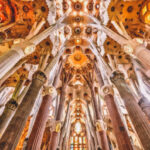 Is Sagrada Familia Worth It?
Is Sagrada Familia Worth It?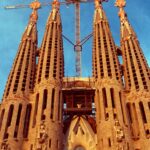 Sagrada Familia: Epicenter of Barcelona
Sagrada Familia: Epicenter of BarcelonaIf you want to know other articles similar to The Fascinating Facts about Barcelona's Iconic Landmark: La Sagrada Familia you can visit the category Sagrada Familia.
Leave a Reply

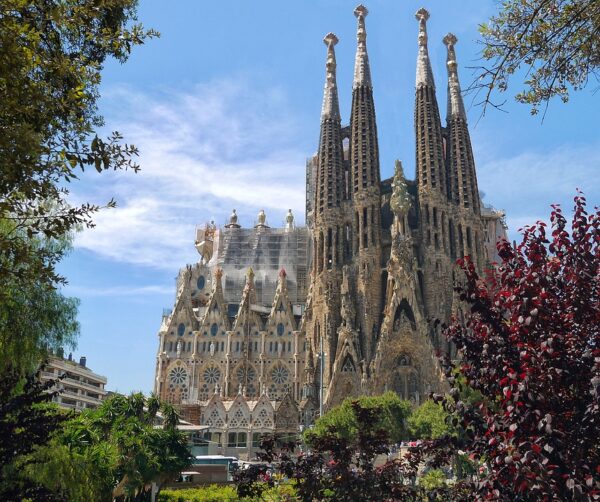
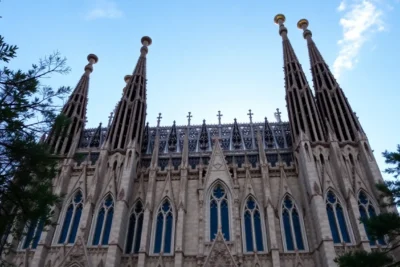
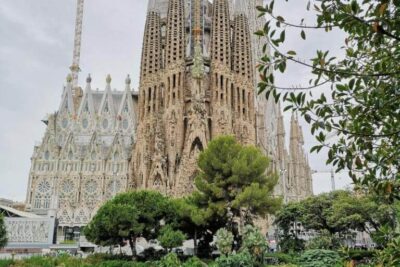
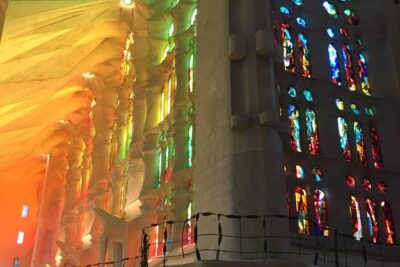
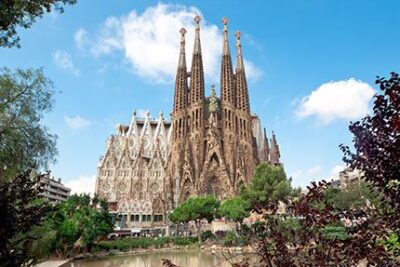
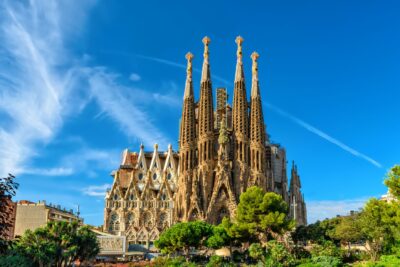
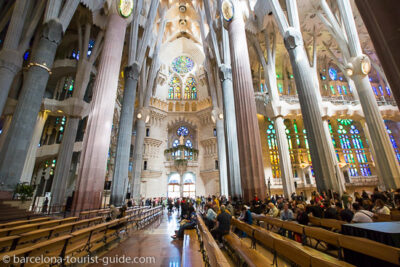
Read more!